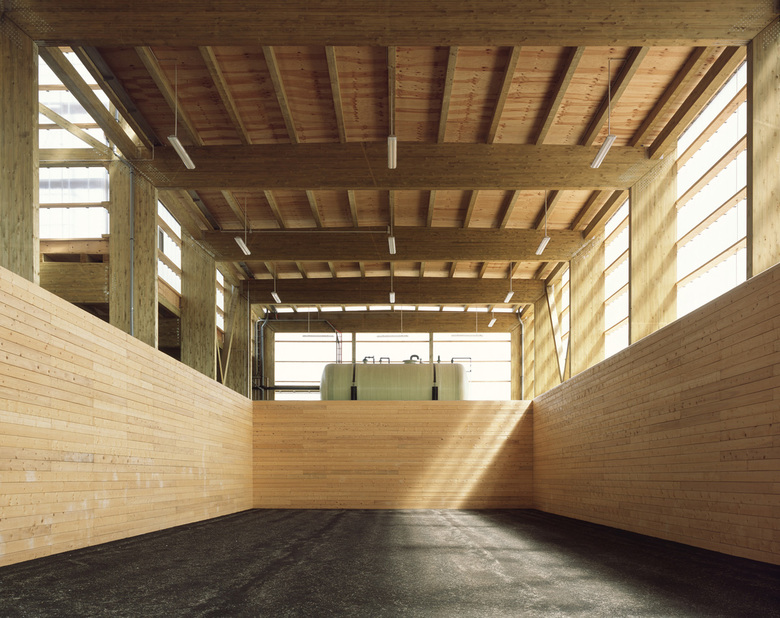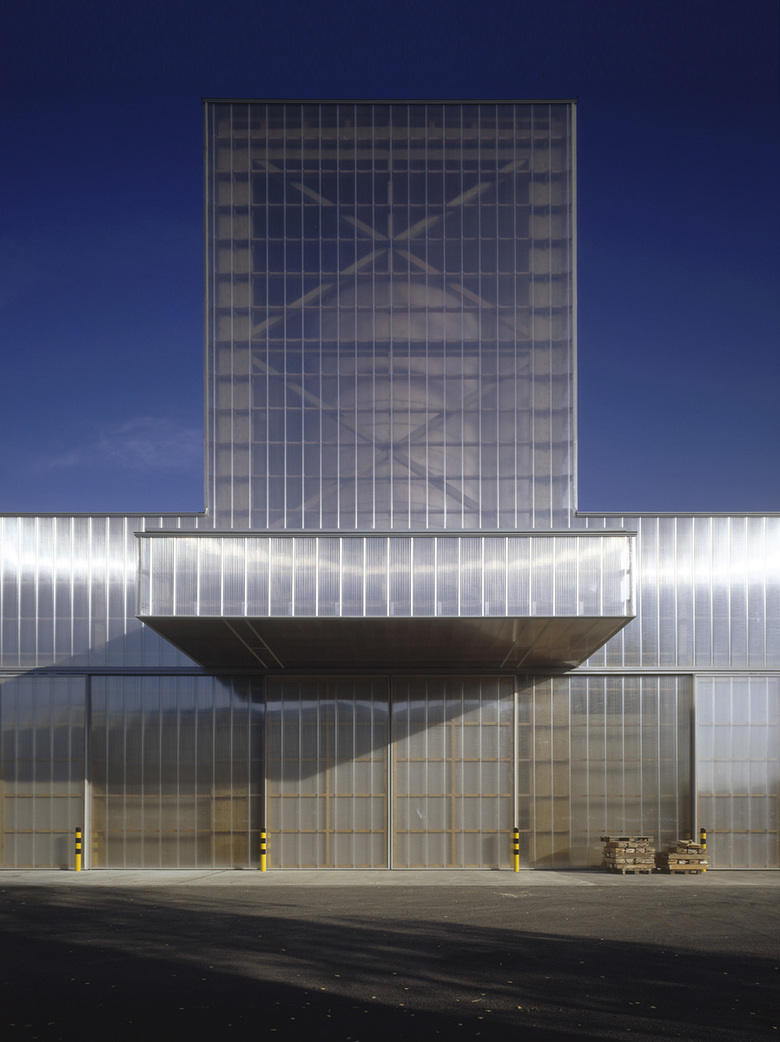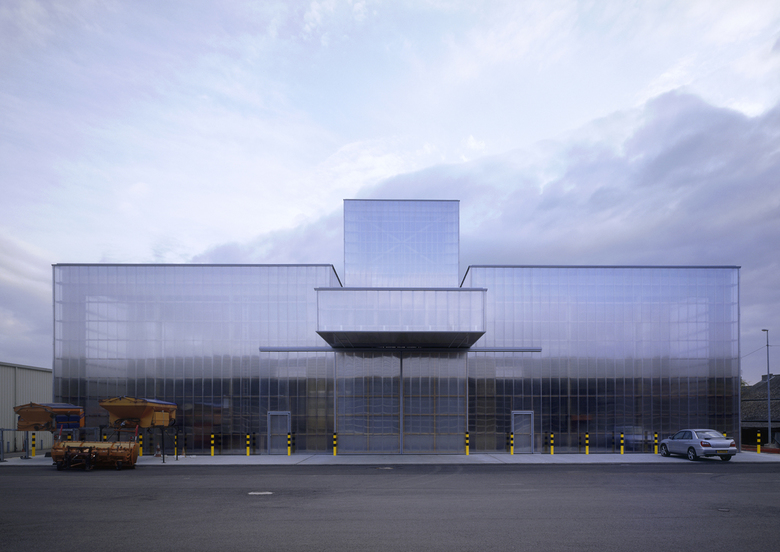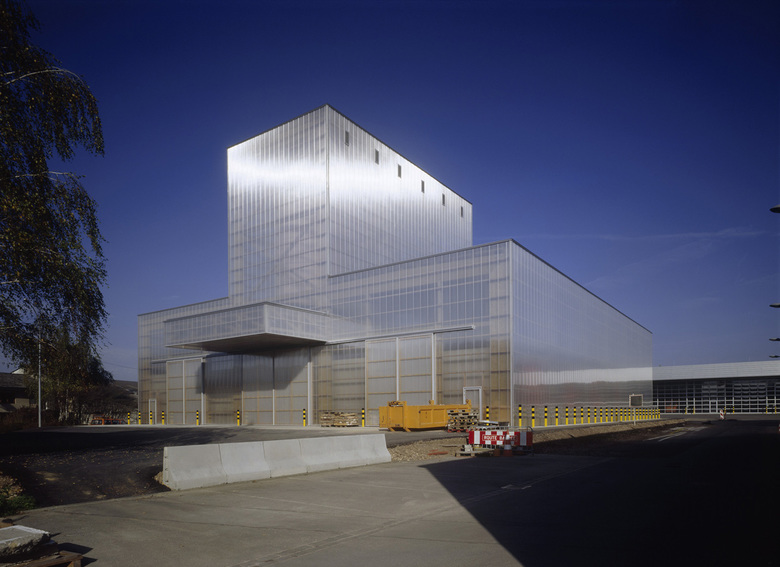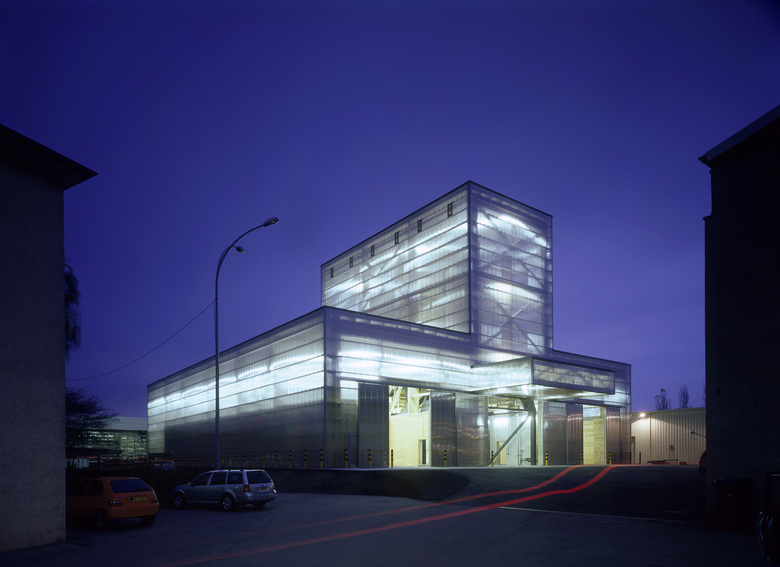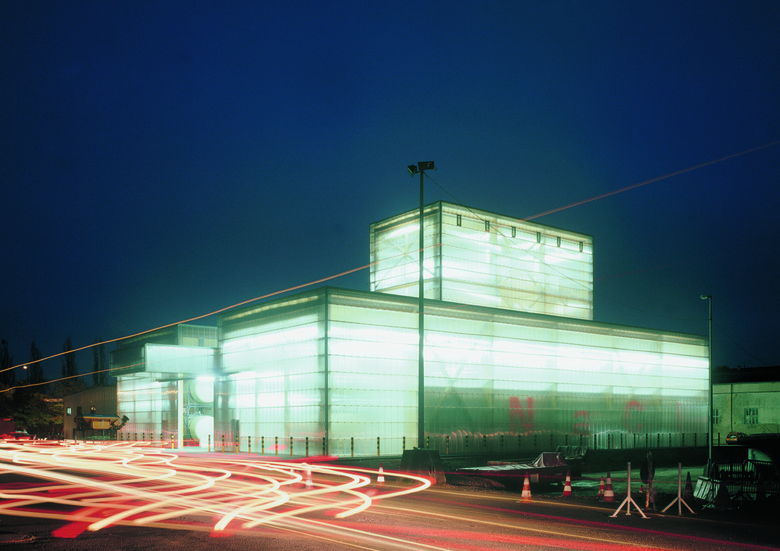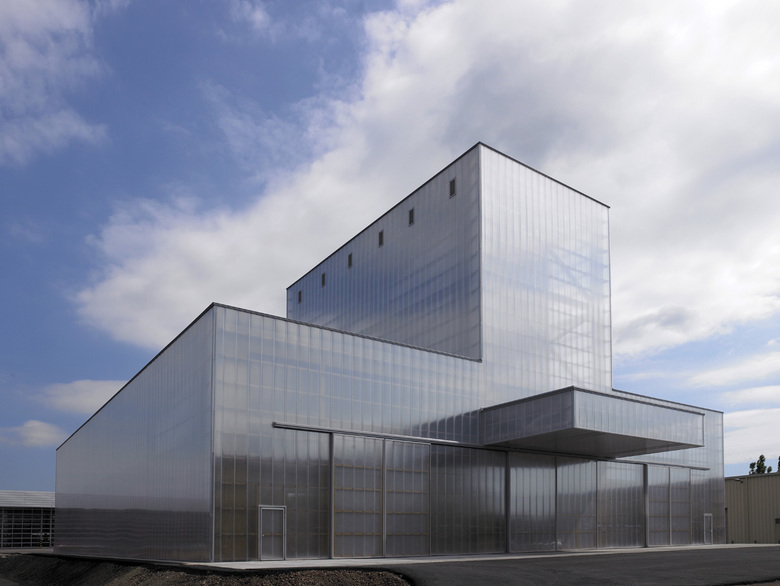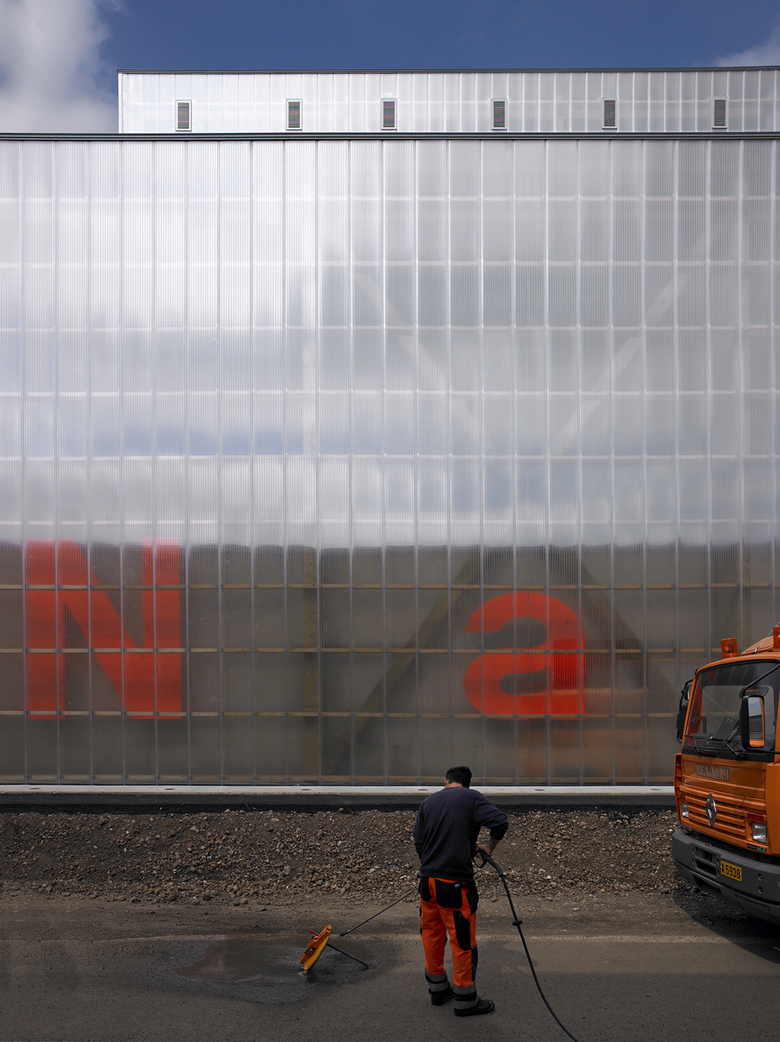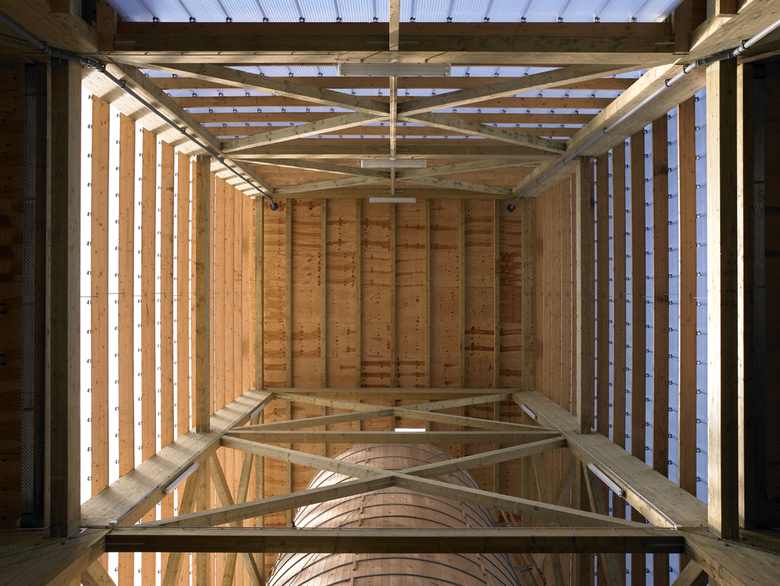Salt storage hall for the luxemburg motorway network
回到项目列表- 位置
- Bertrange, 卢森堡
- 年份
- 2007
The salt storage hall is the first building to be completed in the overall Ateliers centraux de l’Administration des Ponts & Chaussées project in Bertrange designed by Bruck+Weckerle Architekten. The building is the main depot for Luxemburg's motorway network.
When the building is in operation, there is noise from the conveyor system filling the silos and noise from the salt-spreading trucks. The building has therefore been placed as far as possible from the borders of the site and all operations (the salt conveyor system, filling the trucks) are all carried out within a protective skin so that adjoining residential areas are not affected.
This circumstances give the building its compact and functional form, comprising two side-by-side salt storage halls with a ceiling height of 11 m and each with a storage capacity of 3 500 tonnes of salt. Concrete walls 4.5 m in height and lined with wooden boards form their perimeter. Between the two halls is a through-way with a vertical clearance of 22 m where the salt spreading trucks are filled directly from the silos, each of which has a capacity of 200 tonnes of salt.
The weight-bearing structure of the building is in wood, a material that is salt resistant.
The supports for both the primary structure and the roofstructure use laminated wood beams. The number of roof trusses and the distance between them was dictated by structural considerations. It has been possible to achieve optimal use of wooden components and complete flexibility in installing and replacing the wooden silos.
The external facade comprises translucent, double-walled polycarbonate panels laid vertically. This low-cost but sturdy material allows sunlight to penetrate into the interior, rendering windows unnecessary. These translucent, double-walled panels are also used for the lining underneath the porches of the other buildings on the site, making them a familiar material in the complex.
This form of translucent cladding means that what are otherwise hermetically sealed buildings in use for only a few weeks in the year can appear full of life and insubstantial. Seen from a certain distance, it takes on the colour of the sky, whereas from close by it either reflects the immediate environment or reveals the inside of the building, depending on the position of the sun. At night, it takes on a crystalline form and glows like a giant lanter.
